


January 20, 2019
SCOTT HUMMEL
–––––––––––––––––––––––––––
Music on Demand: Residential Pipe Organs in America
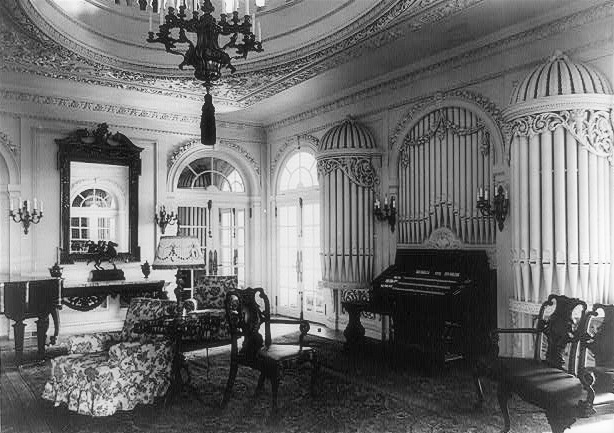
January 20, 2010
SCOTT HUMMEL
–––––––––––––––––––––––––––
Music on Demand: Residential Pipe Organs in America

The 1907 Æolian organ in the home of John D. Rockefeller in Kykuit, New York.
The 1907 Æolian organ in the home of John D. Rockefeller in Kykuit, New York.
As musical technology advanced at the turn of the twentieth century, affluent Americans were greeted with an expanding market of musical machines to satisfy their desires for instant entertainment. The musical life of a private home was no longer confined to the piano or an ensemble hired for special occasions. Pipe organs brought the diverse tonal capabilities of an orchestra to the hands of a solo performer or the increasingly common roll-player attachment. The advent and popularity of the residential pipe organ in the early twentieth century in the United States demonstrates the developing desire for high-quality music on demand and established its place as a status symbol for wealthy patrons. Though music in the home was particularly prevalent at this time, the residence organ opened new sonic possibilities previously only attainable in concert halls or the homes of European aristocracy.
By the late nineteenth century, installing a pipe organ in a home was not a new idea. Some wealthy patrons of the instrument and famous organists had music rooms in their homes where they could enjoy the sounds of a live performance. An organ was a preferred instrument for some since it allowed the player to sustain notes, something not possible on the common household piano. Many early home organs were small and required a new style of voicing, as applying the practices used to design an organ for a church or cathedral would not yield an instrument fit for home music-making. Home organs required gentler stops for the smaller drawing rooms and music rooms into which they spoke, and full pedal sections or even ones of moderate depth were typically not possible. Of all of their specifications, it was important that the instrument at least have a pneumatic action between keyboard and mechanism as opposed to the older direct mechanical action of tracker organs (Clarke 370). Finding space for an instrument sometimes proved the biggest challenge. While rooms such as double parlors could be converted into organ chambers, the organ size was limited to the space of that room. As time passed and wealth increased, some clients were more open to building music rooms specifically for their new instrument. William Clarke, writing for Suburban Life, notes that rooms with a length that is double the width, and a height at least equal the width would do nicely to create a good acoustic and aesthetic for a specially-designed music room addition (371).
An organ’s ability to produce a vast array of tonal colors increased its desirability for wealthy clients. In a 1910 article, Suburban Life advised that home organs should be designed with a variety of different sounds, but all with the home in mind (370). Though residence organs between 1900 and 1940 were built in many sizes (with variation owing to each customer’s tastes, space, and budget), the main purpose of home organs was entertainment (Ambrosino 52). A properly balanced home instrument would bring the resources of an entire orchestra to the comfort of the American home. Around 1910, “very satisfactory organs with modern improvements . . . [could] be obtained from fifteen hundred dollars and upward” (Clark 370). Adjusted for inflation, that would amount to over 37,000.00 USD today. As interest in installing more elaborate and expensive instruments grew, organ builders were quick to capitalize on the new and expanding market for their product.
Although several companies built pipe organs for America’s homes, the foremost in the industry was the Aeolian Company of New York. Founded by William Burton Tremaine in 1887, Aeolian was best known for their Pianola, a line of piano players invented by Edwin Votey, who joined the firm in 1897 (Hoover; Morris 57; Hoover). The first Pianola, introduced in 1900 and aimed at the middle-class market and upward, “was not a player piano but a piano player,” a cabinet-sized device that could easily be used on and removed from any piano (Barden 255). Although the first Pianolas were an add-on device, the name later came to represent the traditional player piano, with the roll player and mechanical action built into the instruments themselves. Branching out from pianos, the company also produced reed organs and their “Orchestrelle”, the predecessors to the full-scale residential pipe organs of which they would become the premier supplier, building over 800 between 1890 and 1931 (Ambrosino 52). The Orchestrelle enabled performance by hand or by the use of rolls with tonal instructions for the operator. As the roll passed through the player mechanism, written instructions would guide the operator in selecting stops and making adjustments to dynamics and tempo. The instrument had such a broad appeal that even Mark Twain owned one, an instrument that remains in his home museum to this day. Here is a video of that instrument, which is currently housed at the Mark Twain Boyhood Home and Museum:
By 1901, when the Aeolian Company opened their organ plant in Garwood, New Jersey, the firm had already started applying their earlier player systems to the pipe organ with much success both technically and commercially, producing 30 to 40 instruments per year (256). In 1913, the introduction of the new Duo Art player system to their piano line brought a striking new level of reproduction and realism far surpassing previous competitors’ models. Here is a video of the system in use:
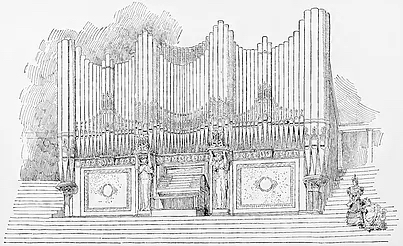
While some owners of residence organs could actually play or had the means to hire a private organist, most instruments were operated primarily with a roll-player system. Automatic instruments of all kinds were especially popular because they offered something very new: “repeatability of music” (255). Although Edwin Votey had produced a small roll-playing pipe organ for the 1893 World’s Columbian Exposition, Aeolian was first asked to incorporate the Orchestrelle roll-player technology into an actual pipe organ in 1895 for the home of Oliver Belmont in Newport, Rhode Island (256). Recognizing the economic potential, several other notable American organ builders developed player mechanism, including Austin, Estey, Kilgen, Kimball, Moller and Skinner (257).

By 1910, “the majority of modern residential organs . . . [were] equipped with mechanisms for automatic transcriptions of symphonies, overtures, operatic selections, and standard concert music by means of music rolls used in self- playing instruments” (Clark 371). The operators need only to insert a paper roll into the mechanism, and the organ would come alive with performances saved in the punched paper before them. Initially, the early Skinner and Aeolian organ players operated only the organ’s notes, and the operators had to choose the registrations. Skinner moved on to design a more complex player which used narrow rolls and an electro-pneumatic multiplexer to reproduce a full-range performance, but produced only 75 instruments from 1922 to 1931 (Ambrosino 53). Aeolian, in contrast, developed their player system first into the organ solo system and then the Duo-Art Reproducing Organ, and met phenomenal success (Morris 57).
Aeolian’s first innovation, the 116-note solo music rolls (Smith, Aeolian 146) contained “amazingly small holes at 12 to an inch played on a tracker-bar, which had two sets of 58-note holes, staggered so that upper and lower perforations could be played independently,” thus allowing complete independence of melody and accompaniment both in notes and registration, the choice of stops or tonal resources an organist sets during a performance (Morris 57).
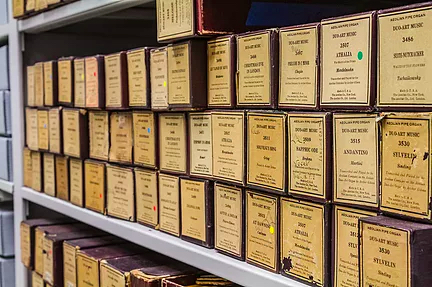

These players required active participation by the operator to set the registration, which in the opinion of Suburban Life added to the educational value of such a product, since any member of the family could play it and enjoy many diverse works of music (Clark 371). In 1917, The Duo-Art Reproducing Organ system with its 176-note rolls brought complete automation to all aspects of the organ, controlling “all of the contacts of the organ: notes, stops, swell shades, and several other devices” (Barden 257; Morris 57). The new system also was fully scalable, controlling smaller instruments directly from the rolls or using the rolls as code for stop groups on instruments of any large size (Barden 257). Shortly after, the $3,500 “Concertola” attachment permitted the storage and performance of up to ten rolls at a time in its Ferris-wheel-style mechanism (258). Here is a video demonstrating the Concertola:
Renowned organ designer George Ashdown Audsley lauded the Duo-Art as a momentous achievement, noting how it was “capable of reproducing, correctly and automatically, music with all its special tonal effects, tempo, nuances, and expression, just as it was originally performed by the hands and feet of the organist, in the usual manner” (Audsley 19). To both musician and listener this idea was almost unheard of. This was the advancement of roll-player technology which led to the popularity of the residence organ as a whole. Many of the great performers of the era made recordings for Aeolian during their visits to New York (Smith, Aeolian 164), including Marcel Dupré, Charles Courboin, Pietro Yon, Harry Shelley, and Louis Vierne (Hoover). The instrument control rolls were far more accurate than the methods for audio recording, which were still in their infancy. Besides major differences of quality and clarity, “the editing process was easier for the artist than phonograph recording, because any corrections or improvements could be made on the same roll” (Smith, Aeolian 153). Performers saw the paper rolls as more than an extra source of income; they could preserve their performance, style, and virtuosic talent for generations, long after they were gone — a musical legacy of a variety never available to performers of previous generations.
Most residence organs were designed in the symphonic style. For this reason, on Aeolian organs in particular, organ design emphasized eight-foot stops (Barden 257), because the wealthy, cultured Americans that purchased organs for their homes wanted symphonic music available to them at any time. An orchestra was not often available to play at one’s home, and piano transcriptions could not provide the full color and effect of a symphonic work. Symphonic transcription rolls were often created “under the immediate direction of distinguished orchestral conductors, thereby securing in the records absolute correct interpretations in every essential direction — technic, tone-coloring, tempo, and expression” (Audsley 27). The automatic players filled a need that the audio industry could not. Duo-Art rolls contained all of the shading and refinement of the original performance in “all in the highest possible fidelity. This sort of luxury was not to become available until the advent of the microgroove LP record some 30 years later!” (Morris 57).
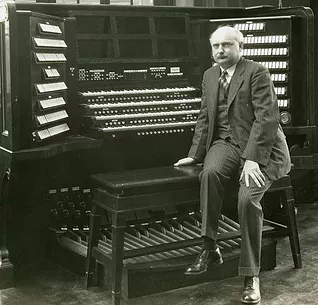
By installing these instruments instead of relying solely on the audio industry, these customers unknowingly set a standard and expectation for the reproduction of musical works. If the quality of the phonographic recordings had been acceptable replications of the performances they intended to capture, the many wealthy clients of Aeolian and other companies would not have felt the need to purchase a residence instrument, far more expensive than even a high-end phonograph. The quality of rolls clearly met the approval of creators and consumers alike. The largest Aeolian organ ever built was installed in the summer residence of industrialist Pierre S. du Pont, at Longwood Gardens (Barden 256). Even though du Pont employed renowned organist Firmin Swinnen as resident organist, du Pont still acquired a large collection of Duo-Art rolls, particularly opera arias, and had arrangements with the company to try rolls on approval.

When Aeolian installed a home instrument, the layout typically placed the pipes in multiple locations throughout the structure, not simply in one room, allowing the performer or player system to move the sound around the room (Barden 257). These locations would often be creative; in the Watkins Mansion installation (Opus 1551, Smith, Aeolian 368), the Echo division installed in the basement spoke into the Great Hall by way of an elevator shaft that brought wood upstairs for the fireplace.
In addition to the musical benefits of the residence organ, the position of such an instrument acted as a status symbol for wealthy Americans. Aeolian’s Pianola brought automatic music reproduction to the home, and its pricing made it available to the upper middle class. With the advent of a time when anyone could own a piano and even those with lower incomes could possess music reproduction, “those who could afford real luxury took home music making to unprecedented height by installing symphonic organs in their salons” (Barden 254).
In some ways, the residence organ spread in popularity in a manner similar to that of other items popular among America’s wealthy families. Only four years after the first Aeolian Organ was installed in the home of Oliver Belmont, William Vanderbilt, Sr., ordered Opus 882 for his home in Oakdale, New York (Smith, Pipe Organs 345). The two were long-time friends, and Vanderbilt would undoubtedly have encountered Belmont’s Newport instrument (344). The Vanderbilt family itself has an extensive Aeolian lineage. The opus numbers given to each instrument by the builder designate the order in which all of their instruments were built and, in the case of families, reveals who had an organ first.
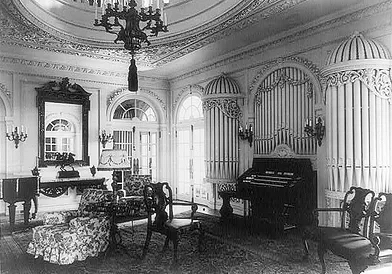
When one looks through the long list of residence organ owners, many other familiar names stand out. Andrew Carnegie, sometimes referred to as “the patron Saint of the American Pipe Organ Builder” for his funding of 7,689 organs (Smith, Pipe Organs 55), ordered an organ from Votey Organ Company (which was working with Aeolian) in 1900. Interestingly, it was one of the few organs associated with Aeolian that did not include an automatic player (57). John D. Rockefeller installed Aeolian Opus 1040 in his Pocantico Hills, New York home, Kykuit, in 1907 (276). The instrument was renovated in 1912, at the time of a remodeling of the mansion (279). The fact that organ ownership was so closely associated with wealthy America explains the expectation that anyone of means would have an organ in his home; it was the “quintessential symbol of musical opulence” (Barden 256). After all, appreciation of classical music and the organ repertoire denoted a refined individual.

Even with the high popularity and quality of the residence organ, some still write off their existence and prevalence as merely an expensive fad of the upper class who simply bought lavish instruments because they could. In reality, these instruments and the player systems that most contained demonstrate an underlying desire for high-quality reproduction of musical performance. Residence organs “were the apotheosis of music making in the home” in a time when music and family music performance was one of the most significant pastimes of any class. From Aeolian’s first reproducing reed organ, “The Musical Wonder,” to the large high-budget pipe organs, each product met the growing aspiration to achieve repeatable performance (254). It was this constant goal that led to the creation of the high-resolution audio recording and reproduction of today. The owners of these home organs simply had the means to achieve something that was common among all musicians and listeners. Even though many of the larger and notable instruments were sold to very well-known Americans, a great number of smaller and modest instruments were installed in homes of individuals all over the country.
Within the pipe organ industry, the surge of residential installations stimulated innovation in pipe organ technology. The predominant Aeolian Company was one of the first companies to implement electro-pneumatic technology in pipe organs (Morris 57). In order to suit the residential environment, Aeolian created a noiseless action for their home organs which were much quieter and better suited for situations in which listeners were close to the pipes (Barden 256). For the player mechanisms, Skinner’s multiplexer and Aeolian’s humidity compensating decoding bar offered great advances for reproducing roll systems (258). For the modern musician and listener, the numerous rolls made — thousands in the Aeolian catalogue alone — preserve countless musicians’ styles and interpretations in a time when audio recording would not have provided anything close to the amount of detail and quality (Morris 57).
To many living today, the idea of installing a pipe organ in a home seems somewhat bizarre or lavish, and thus “the effectiveness and significance of residence organs is widely underestimated” (Barden 254). Whether for a private evening at home or a large house party, these instruments were designed to entertain. In a high-class society based on visibility and preferences, having an organ and enjoying its music projected an image of culture and taste. Simultaneously, the social season quickly revealed who owned what. Trends and information circulated quickly, so if one man had an organ, soon another did, too. Although the trend was not limited to the United States, a “majority of Aeolian residential player-organs were built for North American clients" (Hoover). It was in the United States that installation spread so rapidly among friends and down family lines. The home organ was a fanciful concept: the ability to hear whatever music one wanted, whenever one wanted it, with the full emotion and nuance of a great performance. Though huge and mechanical, these instruments held the same essential position at a gathering as a large sound system and music collection. In that era, American pipe organ building reached a new high and consumers set the standard which musical reproduction had to meet.
––––––––––––––––––––––––
The Vox Humana Editorial Board extends our warmest thanks to Longwood Gardens for their kind permission to reproduce the photos in this article.
Ambrosino, Jonathan. “That American Organ.” Choir & Organ 21, no. 6 (December 2013), 52–55.
Audsley, George Ashdown. Duo-Art Aeolian Pipe Organ. New York: Aeolian Company, 1921.
Barden, Nelson C. “Aeolian, Skinner, Aeolian-Skinner: A History of the Aeolian Company — Music for the Mansions.” The American Organist 24 (May 1990), 254–60.
Clarke, William Horatio. “Pipe-Organ in the Home.” Suburban Life 11 (December 1910), 370–71.
Morris, Paul. “The Aeolian Pipe Organ.” Organists' Review 92, no. 1 (Febrary 2006), 57–58.
Smith, Rollin. Pipe Organs of the Rich and Famous. Richmond: OHS Press, 2014.
Smith, Rollin. The Aeolian Pipe Organ and Its Music. Richmond: OHS Press, 1998.
––––––––––––––––––––––––
The views and opinions expressed in this article are those of the author, and do not necessarily reflect the position of Vox Humana.